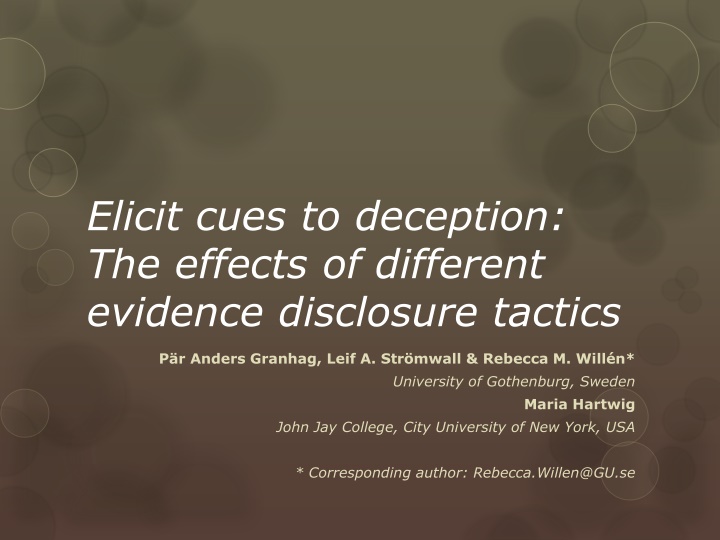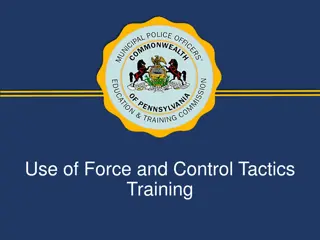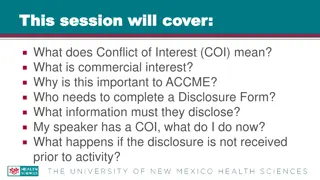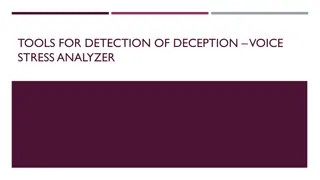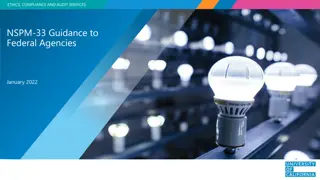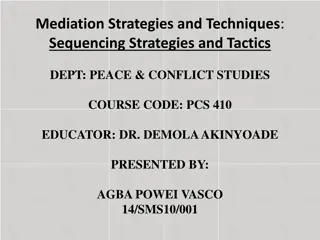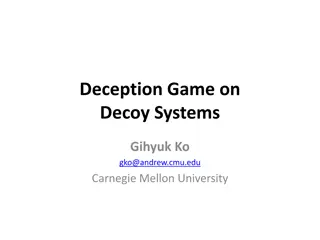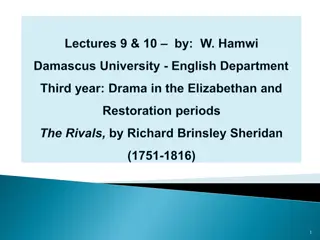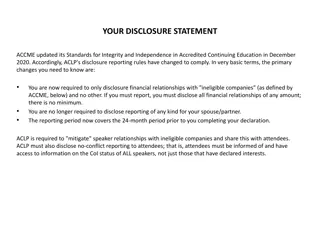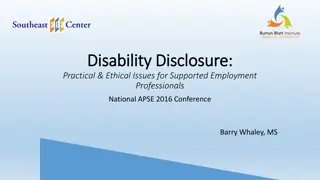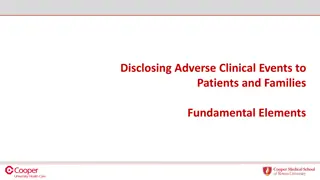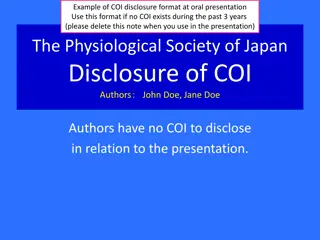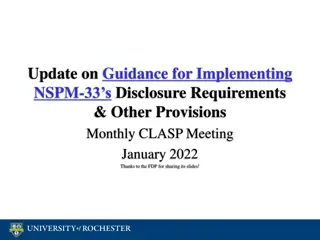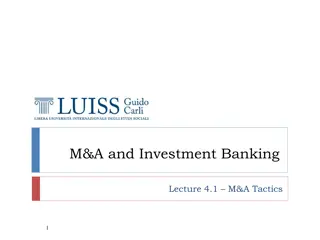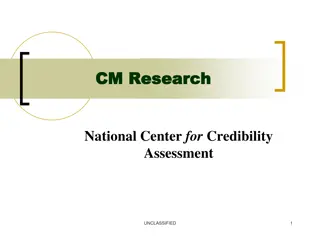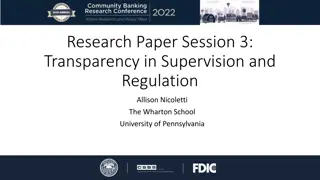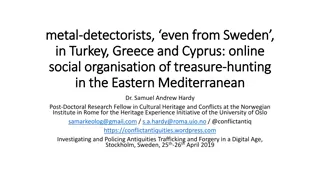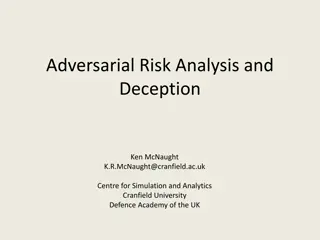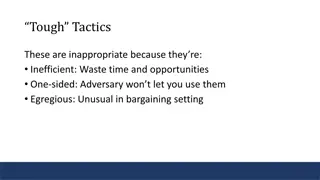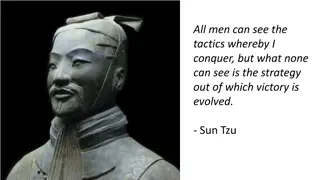Detecting Deception: Effects of Evidence Disclosure Tactics
This study investigates cues to deception by exploring the impact of different evidence disclosure tactics on suspects. Strategies like Strategic Use of Evidence (SUE) are examined, shedding light on improving lie detection in interviews.
Download Presentation

Please find below an Image/Link to download the presentation.
The content on the website is provided AS IS for your information and personal use only. It may not be sold, licensed, or shared on other websites without obtaining consent from the author.If you encounter any issues during the download, it is possible that the publisher has removed the file from their server.
You are allowed to download the files provided on this website for personal or commercial use, subject to the condition that they are used lawfully. All files are the property of their respective owners.
The content on the website is provided AS IS for your information and personal use only. It may not be sold, licensed, or shared on other websites without obtaining consent from the author.
E N D
Presentation Transcript
Elicit cues to deception: The effects of different evidence disclosure tactics P r Anders Granhag, Leif A. Str mwall & Rebecca M. Will n* University of Gothenburg, Sweden Maria Hartwig John Jay College, City University of New York, USA * Corresponding author: Rebecca.Willen@GU.se
Interviewing to detect deception People are bad lie detectors (e.g. Bond & DePaulo, 2006) How to increase interviewing officers ability to detect deception? Strategic Use of Evidence (SUE) When there is evidence against a suspect Create and strengthen indicators of reliability; e.g. statement- evidence inconsistency and within-statement inconsistency Late disclosure of evidence after a free recall and specific questions Mainly developed by Hartwig, Granhag, Str mwall and colleagues during the last < 10 years Parts of the technique is applied by practitioners in Sweden, Norway, Finland and Denmark
A tactical dimension of SUE No/little previous research on disclosure tactics Under development: different disclosure tactics for different situations Our study: A single evidence (CCTV footage) was disclosed to mock-suspects in one of three ways: Early Evidence SUE-Basic (SUE-B) SUE-Incremental (SUE-I) Two inconsistency measures
Two inconsistency measures 7 Statement-evidence inconsistency Deceptive suspects Statement-evidence To which degree is the suspect s account consistent with the evidence? Within-statement To which degree is the suspect changing her/his account during the course of the interview? 6 5 4 3 Deceptive suspects consistent with the evidence 2 Truthful suspects 1 0 1 2 3 4 Within-statement inconsistency
6 predictions: It matters when and how the evidence is disclosed (with regard to inconsistency measures) Early SUE-B SUE-I Introduction Disclosure of evidence Free recall Specific questions Closure Introduction Free recall Specific questions Disclosure of evidence Closure Introduction Free recall Specific questions Disclosure of evidence Closure When & how When & how When
Methods: disclosure of evidence in Early Evidence and SUE-Basic The interviewer: We know that you have been in that room and handled the books in that specific shelf. We know this since the bookstore has video camera surveillance. The recording shows you crouching in front of this specific shelf, handling these specific books. So, what is your explanation to this?
Methods: disclosure of evidence in SUE-Incremental We have information saying that you went into this room. Can you explain what you did there? You have been seen in front of this shelf. Can you explain what you did there? We know that you have been in that room since the bookstore has video camera surveillance what is your explanation to this?
Methods: Mock-crime scenario Design. 2 by 3 between subjects design: suspect status (guilty vs innocent) and interview type (Early Evidence vs SUE-Basic vs SUE- Incremental) Participants. 195 invididuals mostly students who received a cinema ticket (appr. 11 EURO) for participating Procedure. 1. Randomly allocated to one of the 6 conditions 2. Bookstore visit 3. Pre-interview planning 4. Interview 5. Questionnaire In total: < 60 min
Methods: Coding procedure The statements were transcribed and then coded for two inconsistency measures: Statement-evidence inconsistency Scale 1-7 (very low - very high inconsistency) Coder agreement: r = .68 (ICC) Within-statement inconsistency Scale 0-4 (not at all - substantially inconsistent) Coder agreement: r = .87 (ICC)
Main results Both inconsistency measures were useful to distinguish guilty and innocent suspects Statement-evidence inconsistency was higher for guilty than innocent suspects, p < .001, 2 = .63 Within-statement inconsistency was higher for guilty than innocent suspects, p < .001, = .37; several guilty suspects were inconsistent to some degree but not one of the innocent suspects
Main results SUE-I Guilty SUE-B Guilty Early Guilty SUE-I Innocent SUE-B Innocent Early Innocent 7.0 Statement-evidence inconsistency. SUE-I and SUE-B resulted in larger differences between guilty and innocent suspects, than Early Evidence Statement-evidence inconsistency 6.0 5.0 Within-statement inconsistency. SUE-I resulted in the largest difference between guilty and innocent suspects 4.0 3.0 2.0 1.0 0.0 0.2 0.4 0.6 0.8 1.0 1.2 1.4 1.6 1.8 2.0 Within-statement inconsistency
SUE-I Guilty SUE-B Guilty Early Guilty SUE-I Innocent SUE-B Innocent Early Innocent Our predictions 7 7.0 Statement-evidence inconsistency Deceptive suspects 6 6.0 5 5.0 4 4.0 3 3.0 Deceptive suspects consistent with the evidence 2 2.0 Truthful suspects 1 1.0 0 1 2 3 4 0.0 0.2 0.4 0.6 0.8 1.0 1.2 1.4 1.6 1.8 2.0 Within-statement inconsistency
Summary of the main results SUE-I We have information saying that you went into this room. Can you explain what you did there? Introduction Free recall Specific questions Disclosure of evidence Closure You have been seen in front of this shelf. Can you explain what you did there? We know that you have been in that room since the bookstore has video camera surveillance what is your explanation to this? When How As predicted, both when and how the evidence was disclosed to the suspect moderated the effectiveness of the disclosure (with regard to the inconsistency measures)
In sum An advancement of SUE; introducing a new case- dependent tactic (disclosure of a single evidence) A new cue to deception: within-statement inconsistency Late disclosure after a free recall and specific questions - is more useful than early disclosure Effective to consider both when and how to disclose the evidence
Thank you for listening! Contact details E-mail: Rebecca.Willen@gu.se Phone: +46(31)-786 16 72 Web: www.clip.org.gu.se
